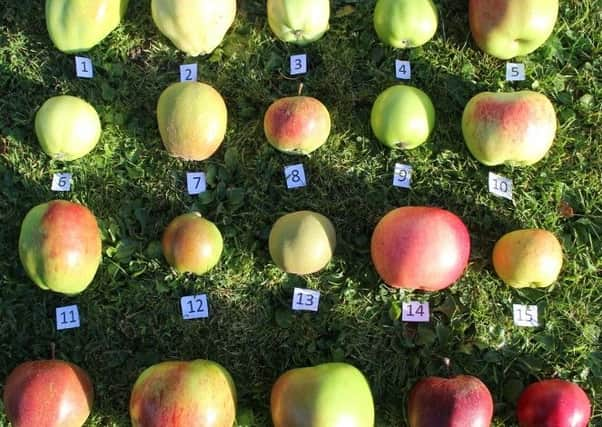Do you know your orchard heritage?


For example, a family tree grafted with three different apple types will thrive in a large pot, providing you use a soil-based compost enriched with organic matter, and ensure it never dries out. Such trees cost more, but you are getting variety.
A specimen on the M27 dwarfing rootstock that I planted 10 years ago carries three apple cultivars – Discovery, James Grieve and Reverend W Wilks. These offer continuity of fruit from late August until the end of October.
Advertisement
Hide AdAdvertisement
Hide AdThree key culinary varieties – Howgate Wonder, Lord Derby and Crimson Bramley – store well for winter. Where possible I grow self-fertile varieties.
When two different cultivars are flowering together it helps boost the crop. Even a tree blooming in a neighbouring garden helps. So-called triploid varieties, and Bramley’s is one, need two others flowering alongside. This is a good reason for having at least one ornamental crab apple with extended flowering period.
I was discussing this fruit with Trevor Jones, head gardener at The Alnwick Garden, and he agreed that I could pick one of each variety to organise an apple photo-call. This comprises TAG heritage varieties, plus a few from Tom’s modest collection – 20 in all. Some are large, others small, but they’re at their best right now and worth a visit.
The apples: 1 Lady’s Finger of Lancaster; 2 Dog’s Snout; 3 Keswick Codlin; 4 Cockpit Improved; 5 Lady Henniker; 6 Early Victoria (aka Emneth Early); 7 Golden Nugget; 8 Worcester Pearmain; 9 Balsam; 10 Herrings Pippin; 11 Isaac Newton’s Tree; 12 Winston; 13 Brownlees Russet; 14 Discovery; 15 James Grieve; 16 Braeburn; 17 Howgate Wonder; 18 Lord Derby; 19 Scarlet Bramley; 20 Redlove.